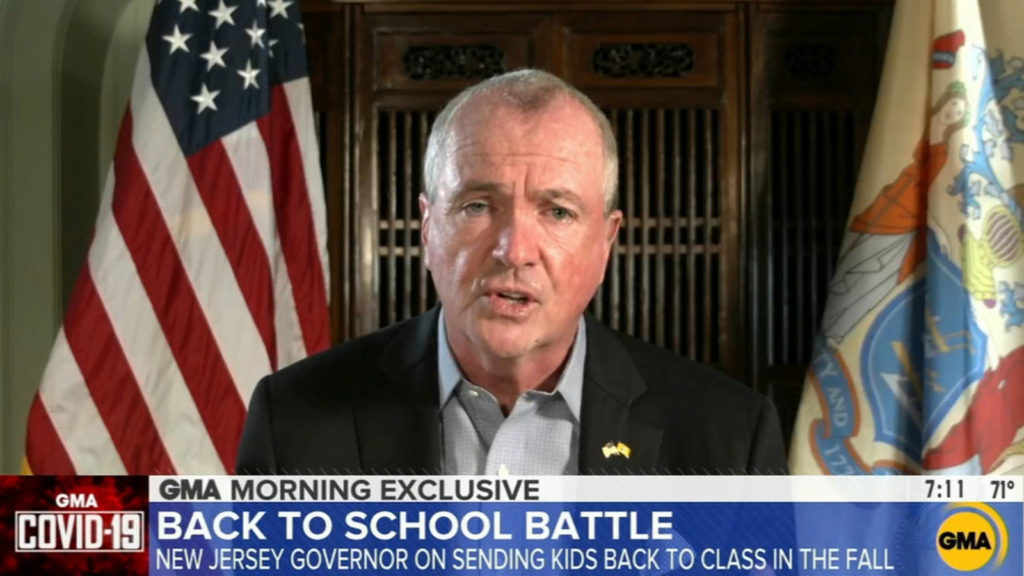Last week, by a vote of 6-3, the Bridgewater-Raritan School Board approved a resolution telling Gov. Phil Murphy to have the state Department of Education create a statewide virtual learning option for all children under 12 who aren’t eligible yet for COVID-19 vaccines, as well as older students who have health conditions that preclude vaccination. Somerset County, where Bridgewater-Raritan schools are located, has a COVID risk of “high” today.
In other pandemic news, New Jersey’s in-school COVID-19 outbreaks increased to 39 (outbreaks are when three or more people catch COVID in school from one other person) and
the total number of student, teacher, and staff cases doubled from last week to this week. This school in Cumberland County has to close for 19 days. In Toms River, one of NJ’s largest school districts with 15,500 students, more than 1,100 public school kids are quarantined this week due to COVID-19, either because they tested positive for the virus or were in close contact with someone who did. Fifty-nine teachers are out for the same reasons. (Lots of anti-maskers in Ocean County, where Toms River is located.)
Schools are struggling; my local district just closed our intermediate school (grades 4-6). No wonder Bridgewater-Raritan board members (and the parents in the audience urging them on) are pleading for virtual options to in-school learning. It could be a long winter.
Yet winter might feel shorter if the Murphy Administration’s Department of Education was exercising necessary leadership during the cornoavirus pandemic.
This is not an impossible ask. In fact, it’s happening across the country. The Center for Reinventing Public Education (CRPE) has been maintaining a database of how school districts are responding to disruptions and 94 out of the 100 largest districts in the country have created remote options for student learning. Why? Because, according to this tracker
, there are 1,400 school closures across 35 states due to COVID-related outbreaks.
Thus, Bridgewater-Raritan’s resolution makes sense. The alternative is watching NJ school districts invent the wheel 600 times.
In an ideal world we’d have a functional state education department where leaders respond to school districts’ needs–like the statewide virtual learning option that Bridgewater-Raritan is begging for. Other states are doing this. Here’s one example from CRPE of what can work for large groups of students:
Indianapolis Public Schools is contracting with Paramount Schools of Excellence (K-8) and Phalen Leadership Academies (K-12) to operate online schools that offer small group instruction, tutoring services, SEL resources for students with disabilities and English language learners, enrichment activities, and elective options. District leaders have said they want the schools to develop online learning programs that improve upon the low quality and lack of student engagement that plague many virtual charter schools.
As CRPE reports, states and school districts have big challenges right now, primarily giving students immediate access to “quality remote options while in quarantine or isolation.” The analysts write, “we are observing a short window this fall in which states and districts can work together to define these paths for their students and families.”
That window is closing in New Jersey.
Imagine if, during the last 18 months, the state education department had gotten its act together and created a robust virtual learning option for students who must quarantine and for students whose parents prefer virtual instruction during these pandemic times. Wouldn’t kids and families be better off?
But Phil Murphy’s DOE is sitting on the sidelines. Part of the legacy of Murphy’s first Commissioner, Lamont Repollet, was the total dismantling of the Office of Educational Technology. (The page still exists on the DOE website but it’s solely devoted to computer science coursework.) So the Murphy Administration’s DOE is incapable of following the best practices articulated by CRPE; its deference to NJEA leaders, who oppose online schools because they eat into their market share, represents another obstacle.)
Who knows what quarantined students are doing at home? Who knows if we can trust the state DOE to exercise appropriate oversight? These uncertainties leave each district to spin its own wheels, wasting valuable teacher time and student learning, because New Jersey lacks a statewide solution to a statewide problem. There’s something wrong with this picture. Just ask those 1,100 Toms River students.
(Photo courtesy of 6ABC.)



